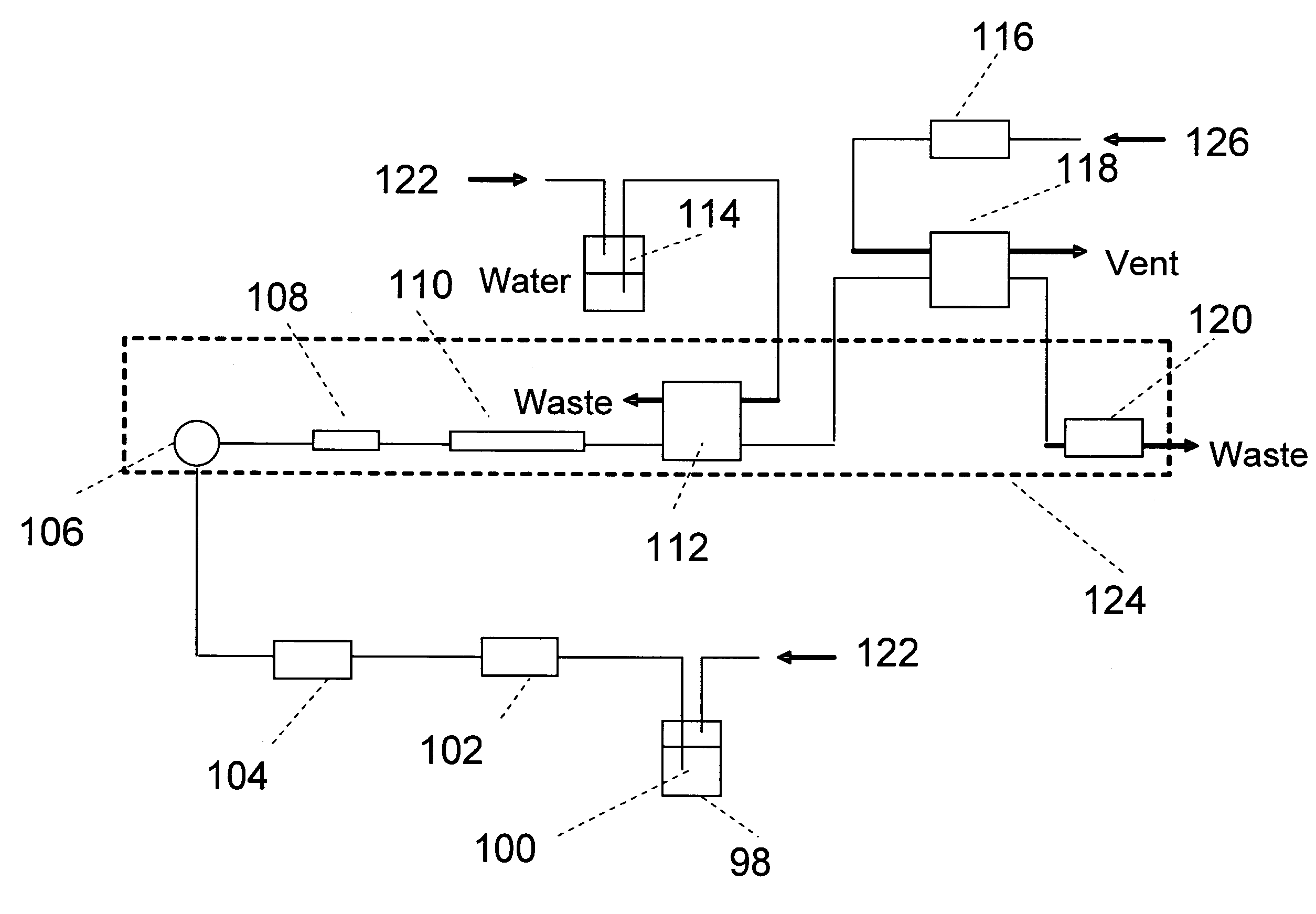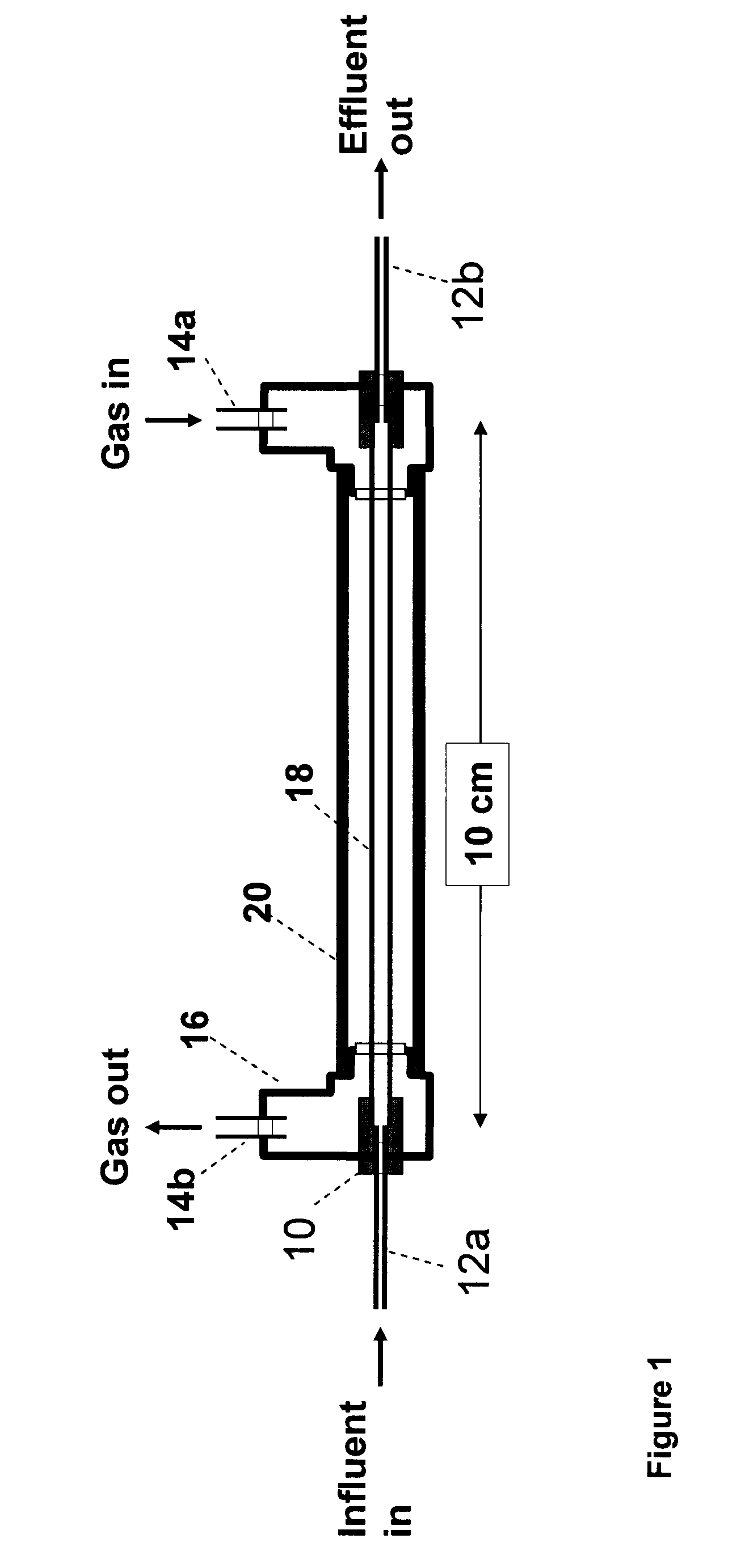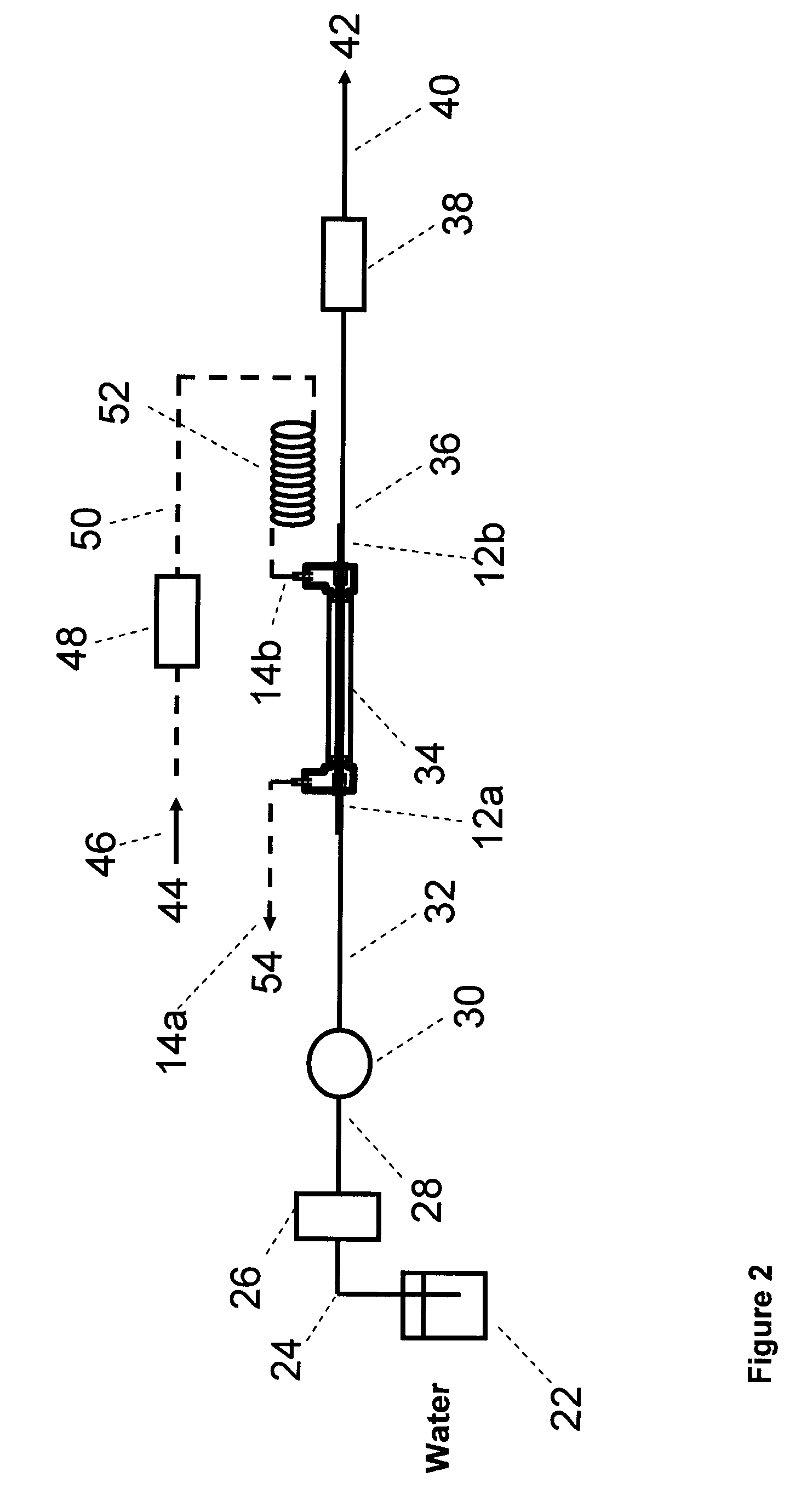Membrane based concentrators
a membrane-based, concentrator technology, applied in water/sewage treatment by ion exchange, water/sewage treatment by osmosis/dialysis, drying using combination processes, etc., can solve problems such as chromatographic equipment or inline, interference with quantification of other anions, and inability to detect trace ions in the presence of matrix ions
- Summary
- Abstract
- Description
- Claims
- Application Information
AI Technical Summary
Benefits of technology
Problems solved by technology
Method used
Image
Examples
example 1
Membrane Tube Based Concentrators
[0074]Initial studies on the performance of different membrane devices were carried out using 10 cm lengths of each membrane. FIG. 1 is a schematic of the tubular concentrator. The membrane tube was enclosed in a PTFE tube 20 (6.7 mm id, 7.7 mm od, 80 mm long, Zeus Industrial Products, Inc.). A polyvinyl chloride (PVC) pump tube 10 (190 μm id, 2 mm od, 5 mm long, Cole-Parmer Instrument Co.) was used as a butt-connector between the membrane tube and fused silica capillary 12a or 12b (250 μm i.d., 365 μm o.d., Polymicro Technologies). Arms of ¼″ id polypropylene tee 16 (Ark-Plas Products Inc.) was appropriately cut and connected to the PTFE tube for gas inlet / outlet connections. Thus, the tubular membrane 18 is mounted in coaxial external tube 20. The heated gas flows through the annular space therebetween to heat the solvent in the influent aqueous liquid solvent stream. The temperature was monitored with a resistance thermal detector sensor (RTD sens...
example 2
Procedure for Coating a Hydrophobic (Celgard) Membrane With a Hydrophilic (Nafion) Coating
[0083]A length of Celgard membrane was immersed in methanol (Mallinckrodt) and then immersed and withdrawn from a 5% Nafion solution (Aldrich), followed by drying for 12 hours. It was then immersed a second time in the Nation solution and the second coating allowed to dry 12 h before use. By placing a thin coating of hydrophilic layer on top of the porous Celgard membrane the tubing is transformed to a hydrophilic membrane.
example 3
Maze Concentrator
[0084]FIGS. 3A-3C schematically show a maze type concentrator in which the membrane tube is in a serpentine path. These devices were built with the Nafion® tubes with an active length of 62 cm. Before assembling the device, the Nafion tube was boiled in 1 M sulfuric acid for 5 min to completely regenerate the tube, and washed thoroughly with water and allowed to dry. The Nafion tube 18 was strung through 0.5 mm apertures in 35 PEEK posts 58 ( 1 / 36 in. dia.) that were affixed in recesses in a right angled serpentine maze 62a machined in aluminum block 62. The groove was 6.4 mm deep and 3.2 mm wide. The posts 58 served to prevent the Nafion tube 18 from touching the external walls or crimping at a turn. Both end of the membrane tube (ca. 1 mm) were inserted in a fluorinated ethylene propylene (FEP) tube (159 μm id, 254 μm od, 25 mm long) and 10-32 to 10-32 unions were used at each end for a leak-tight connection (12a and 12b). A resistance temperature detector (RTD) s...
PUM
| Property | Measurement | Unit |
|---|---|---|
| inner diameter | aaaaa | aaaaa |
| inner diameter | aaaaa | aaaaa |
| temperature | aaaaa | aaaaa |
Abstract
Description
Claims
Application Information
 Login to View More
Login to View More - R&D
- Intellectual Property
- Life Sciences
- Materials
- Tech Scout
- Unparalleled Data Quality
- Higher Quality Content
- 60% Fewer Hallucinations
Browse by: Latest US Patents, China's latest patents, Technical Efficacy Thesaurus, Application Domain, Technology Topic, Popular Technical Reports.
© 2025 PatSnap. All rights reserved.Legal|Privacy policy|Modern Slavery Act Transparency Statement|Sitemap|About US| Contact US: help@patsnap.com



